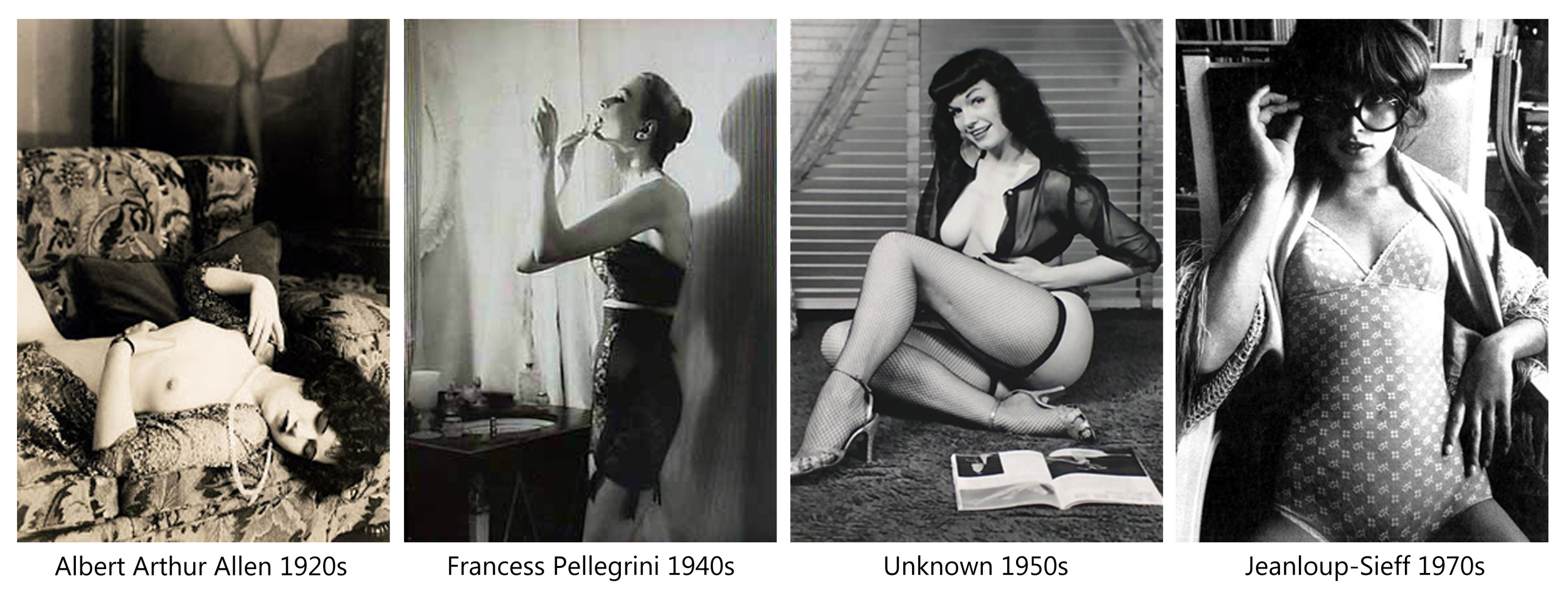Part 1
Welcome to today’s special blog!
Many people have shaped the world the way it is now, some for the worst, but most for the best. Some we remember, others who have totally been erased even though they contributed to many positive changes. Today, instead of talking about boudoir or mindset, we want to share with you those strong women we admire who were forgotten by history.
Sappho of Lesbos
Sappho, AKA “the Poetess”, was born on the Greek island of Lesbos to an aristocratic family in around 620 BCE. She was a musician and considered as one of the greatest poets of her time. She invented and developed lyric poetry as well as a type of lyre and one of the major musical scale still used in jazz and blues music. Sappho was so popular that she became part “The Nine Lyric”, a goup of the most important and influential ancient Greek poets. Statues were erected in her honour and coins minted with her face and name on them.
But the Poetess wasn’t only known for her work. She had strong political views (which led her to be exiled to Sicily twice) and may have been gay. Because of the evidence of romantic interests in women from her poetry, there is a huge debate on wether or not she was homosexual (the terms “sapphic” and “lesbian”, both related to the love between women, are coming from “Sappho”).
I have not had one word from her
Frankly I wish I were dead
When she left, she wepta great deal: she said to me, "This parting must be
endured, Sappho. I go unwillingly."I said, "Go, and be happy
but remember (you know
well) whom you leave shackled by loveIf you forget me, think
of our gifts to Aphrodite
and all the loveliness that we sharedall the violet tiaras,
braided rosebuds, dill and
crocus twined around your young neckmyrrh poured on your head
and on soft mats girls with
all that they most wished for beside themwhile no voices chanted
choruses without ours,
no woodlot bloomed in spring without song."
(Barnard Translation, Sappho, 1)
Those rumors (and time) are the reasons why her work mostly disappeared. Legends claim her poems were purposefully destroyed by the medieval church to suppress lesbian love poetry, some of her work was also lost because it wasn’t translated and copied. Of the nine volumes of poetry she composed only one full poem survived while the rest are fragments. Her music sadly didn’t survive as well.
Sources: Wikipedia & World History Encyclopedia
Gladys Bentley
Gladys was a revolutionary American gender-bending jazz and blues singer, pianist, and entertainer during the Harlem Renaissance.
She was very famous for being boldly out, unashamed of her queer desires, and daring to be a cross-dresser (she usually presented herself in men's tuxedos and top hat but also wearing makeup).
She was born in 1907 to a working class family in Philadelphia. In an interview, Gladys mentioned the fact she always felt she was born different. At the age of 9, instead of feeling good in dresses, she stole her brother’s suits and begin to feel more confortable in boy’s clothes. She didn’t feel like her body represented who she was and knew she was attracted to women at an early age. Of course her parents disapproved and decided to bring her to doctors in hope to “cure” her and make her become a “normal woman”.
In order to live her life the way she wanted and fulfil her dream of becoming a musician, Gladys run away from home at the age of 16 and settled in Harlem.
In 1925 she applied for a job in a nightclub which was looking for a male piano player. After a little bit of convincing, the club agreed to let her audition and she got such a terrific applause that she was offered work on the spot! She soon became a headliner at clubs and theaters. Her song’s lyrics were famous for their bold content such as upsetting all the cultural norms about identity and her feelings towards women. And in 1928 she began a recording carrer that lasted for 20 years.
Despite being recognize for her talent, her look and lifestyle was overly criticized and she wasn’t viewed as a respectable person. Because homosexuality didn’t fit in christian beliefs at that time, people living this lifestyle were considered deviant and unworthy. In 1937 she moved to Los Angeles were unfortunately she faces more challenges in her performance (the state of California had anti-cross-dressing laws so she got banned often from clubs for dressing as a men).
Due to homophobia and society’s pressure, she ended up giving up on who she was to conform to the conservative norms. So she could keep performing and work, she began to wear dresses and married a man. She claimed that she took hormone treatments to become a woman again and live a normal existence.
Sources: Wikipedia & American Masters
Andrée Borrel - code named Denise
Andrée Borrel was a french woman who served in the French Resistance and an agent for Britain's clandestine Special Operations Executive. She was born to a working-class family on the outskirts of Paris in 1919.
At the age of 20 she enrolled in a crash course in nursing that she completed, which qualified her to serve as a nurse in the Association des Dames Françaises. After moving from one hospital to another, she met Lieutenant Maurice Dufour who was involved in one of the country’s largest underground escape networks called the Pat Line (it was a safe house to help Jews, British fighters, and Special Operations Executive agents flee German-controlled France). Unfortunately the network being ratted out, and compromised by the Germans, Andrée and Maurice have to escape and found refuge in England in 1942.
The same year she is recruited by SOE and trained to jump behind enemy lines, spy on, sabotage, and kill Axis troops occupying her home country. In September 1942 Andrée Borrel (and Lise de Baissac) are parachuted into France making them the first female combat agents to do so.
In 1943 she was captured by the Nazis and imprisoned around Paris. In July 1944 she is sent to Natzweiler-Struthof concentration camp, were she was executed a month later at the age of 24.
Andrée was awarded several honors after her death in recognition of her extraordinary work.
Sources: Wikipedia & Military Spouse
Henrietta Lacks and her immortal cells
Henrietta Lacks was an African-American woman born in 1920 in Virginia as Loretta Pleasant (her family never knew why her name changed from Loretta to Henrietta).
In 1951 Henrietta starting feeling a “knot” in her womb and went to went to Johns Hopkins (which was the only hospital in the area that treated black patients at that time) and was diagnosed with cervical cancer. Without her permission or knowledge, two samples were taken from Lacks's cervix during her treatments. Researchers who studied those sample found that her cancel cells kept reproducing, ultimately making them immortal.
Unfortunately she died from her cancer a couple months after her treatment.
The HeLa cells survived, thrived, and multiplied outside her body, so much so that they have been in continual use in labs around the world for 65 years. They have contributed to many science wonders such as:
HPV vaccins;
Understanding how cells stay “young”;
Eradicating Polio;
Mapping the human genome;
Creating a field of virology.
Henrietta changed the face of medical history and got no recognition at that time. As was then the practice, no consent was required to culture the cells obtained from Lacks's treatment. Neither she nor her family were compensated for their extraction or use, and the Lacks family was not made aware of this discovery until 1975.
Sources: Wikipedia & Stat News
So many women have been erased by history or under the shadow of men. We want to bring back those badass women in the spotlight, so keep an eye open for part 2 (and probably 3 and 4 🤗)!











